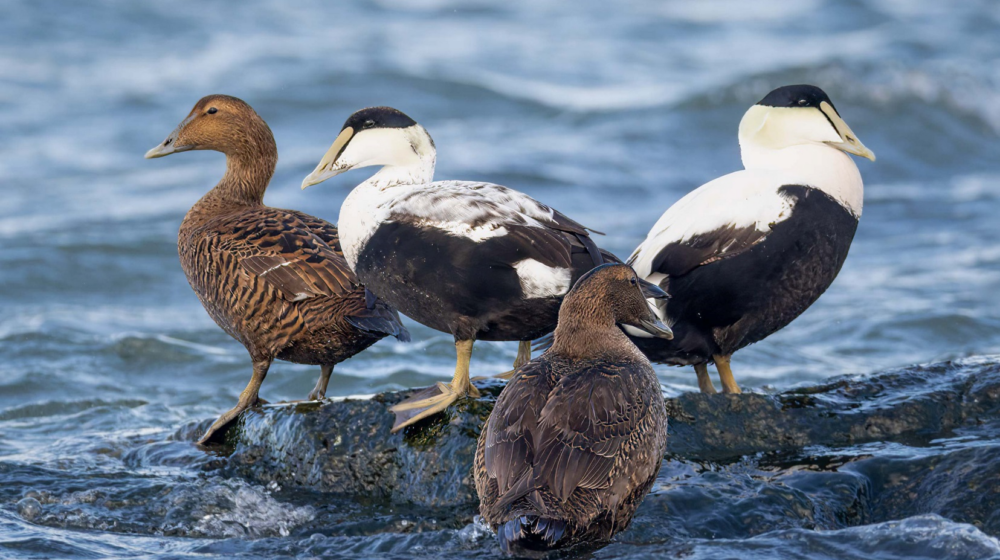Somateria mollissima

If imitation is a form of flattery, then the Common Eider is certainly flattered! Plucking down from their breasts to keep eggs warm in their cold northern homes, people have been gathering this same down from empty nests for more than 1000 years to keep themselves warm too.
Habitat
Look for Common Eiders in northern coastal waters, near rocky shores, from British Columbia and Alaska, through the Arctic to Newfoundland and Greenland, and south to New England in the United States.
Migration sees them move within this same area, while some in Hudson Bay do not migrate at all.
Food
Common Eiders eat mollusks, sea urchins and worms, fish eggs, and crustaceans like small crabs. As
ducklings they eat some algae and small invertebrates.
Behaviour
Males will display to females in fall and mate over winter. Females choose a nest site that is walking
distance to the sea in spring. She will make a groove in the ground with her feet and belly, usually next to a rock, log, or shrub. After three eggs, she begins to line the nest with down and incubate up to eight eggs for about 25 days. Excellent divers, they pry their food from underwater rocks with their chisel-like bills.
Conservation
Market hunting reduced Common Eiders in their southern ranges in the 1800s and early 1900s, but their numbers have since rebounded. Today, arctic populations are facing challenges from over hunting,
pollution from oil spills, heavy metals, lead shot, climate change and activities, such as urchin and mussel harvesting, and aquaculture farms.

